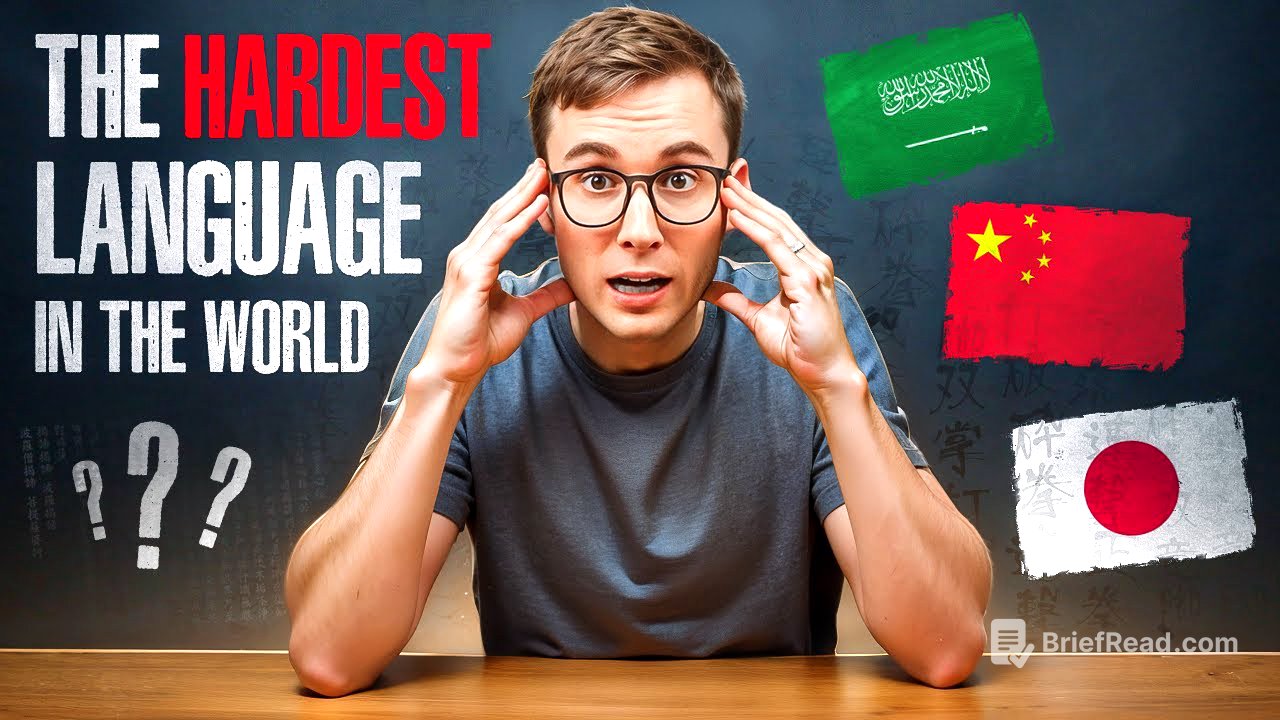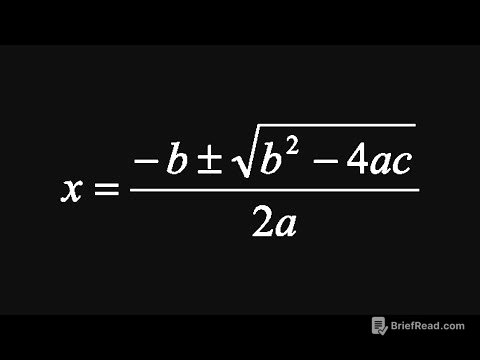TLDR;
This video compares the difficulty of learning Arabic, Mandarin, and Japanese for English speakers, focusing on pronunciation, reading/writing systems, and grammar. It concludes that Standard Arabic is the most challenging due to its complex grammar, followed closely by Japanese and Mandarin.
- Japanese pronunciation is relatively easy, but its writing system is complex.
- Mandarin has challenging tones and numerous characters to memorize.
- Arabic has difficult sounds and a writing system that omits short vowels.
Intro [0:00]
The video introduces a comparison of Arabic, Mandarin, and Japanese, which are among the languages considered most difficult for English speakers to learn according to the Foreign Service Institute. The goal is to determine which of these three languages poses the greatest challenge for English speakers.
Criteria for Comparison [0:35]
The speaker outlines three main criteria for comparing the languages: pronunciation, reading and writing systems (text), and grammar. These three criteria are deemed the most important factors in determining the difficulty of learning a language.
The Battle for Hardest Pronunciation [0:57]
Japanese pronunciation is rated as relatively easy for English speakers, with most sounds present in English. While Japanese has pitch accent, it can be learned with regular exposure to the language. Mandarin pronunciation is challenging due to its tonal nature, where different tones change the meaning of syllables. Arabic pronunciation is also difficult because it contains sounds that are bewildering for English speakers, such as ح and ع, which require dedication to master.
The Battle for Hardest Language to Read [3:31]
Arabic has an alphabet of 28-29 letters, but short vowel sounds are rarely notated, making it difficult to sound out words accurately. Mandarin has no alphabet and relies on thousands of characters, each representing a word or multiple words. Learners need to memorize 4,000-5,000 characters to read native text comfortably. Japanese has three writing systems: hiragana, katakana, and kanji. Hiragana and katakana are syllabaries, while kanji are derived from Chinese characters.
The Battle for Hardest Grammar [7:47]
Mandarin grammar is straightforward, with no verb conjugations, tenses, gendered nouns, or adjective agreement. A handful of particles accomplish most grammatical functions, and sentence structure is similar to English. Arabic grammar is complex, with features such as broken plurals, sun and moon letters, verbal nouns, and a counting system that treats non-animate objects as feminine. Japanese grammar is challenging due to its unfamiliar sentence structure, a system of 188 particles, implied meanings, and honorific speech.
The Final Verdict [10:18]
The video adjusts the scores by doubling the reading and writing and grammar scores to emphasize their importance. Standard Arabic is rated as the most difficult language for English speakers to learn, followed by Japanese and Mandarin.









![[ENG SUB] Official Pilot: รักสุดท้าย My Safe Zone The Series | Ch3 Thailand](https://wm-img.halpindev.com/p-briefread_c-10_b-10/urlb/aHR0cDovL2ltZy55b3V0dWJlLmNvbS92aS82YjRVbkRDR1lzSS9ocWRlZmF1bHQuanBn.jpg)